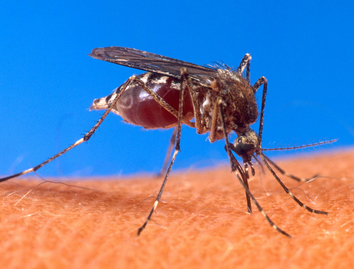Subscriber Benefit
As a subscriber you can listen to articles at work, in the car, or while you work out. Subscribe NowA team of scientists led by Purdue University researchers say they have determined the structure of the Zika virus, a mosquito-borne disease associated with serious birth defects and temporary paralysis.
The breakthrough could help develop treatments for the virus, which has swept through 33 countries and has been declared an international public health emergency by the World Health Organization. There are currently no specific treatments or vaccines for the disease.
A paper detailing the findings was published Thursday in the journal Science. Purdue said its researchers are the first to determine the virus’ structure.
“Determining the structure greatly advances our understanding of Zika, a virus about which little is known,” said Richard Kuhn, director of the Purdue Institute for Inflammation, Immunology and Infectious Diseases. “It illuminates the most promising areas for further testing and research to combat infection.”
Purdue’s recent investment of $250 million in life sciences helped fund the purchase of advanced equipment that allowed the team to do in a couple of months what otherwise would have taken years, said Michael Rossman, a Purdue professor of biological sciences, who led the team along with Kuhn.
Around the country, other research teams are also digging into the mysteries of the Zika virus, which has been spreading rapidly through more than a dozen countries in western hemisphere.
Earlier this week, virologists at the University of Texas announced they had found a type of mouse in which the virus can be tested, according to the American Journal of Tropical Medicine and Hygiene.
Also this week, researchers at the University of California, San Francisco, found that a protein that helps the Zika virus infect adult skin cells might also give it access to stem cells that make brain cells, which could provide insights into birth defects associated with the disease, according to a study published in Cell Stem Cell.
The Zika virus disease, spread by mosquitoes, is usually relatively mild and requires no specific treatment, the World Health Organization said. Symptoms can include mild fever, skin rashes, muscle and joint pain, malaise and headache. The symptoms normally last between two and seven days.
But agencies investigating Zika outbreaks have also found a link between the virus and microcephaly, a birth defect that causes brain damage and an abnormally small head in babies born to mothers infected during pregnancy.
It has also been associated with an autoimmune disease called Guillain-Barre syndrome, which can lead to temporary paralysis.
The Purdue researchers studied a strain of Zika virus isolated from a patient infected during the French Polynesia epidemic. It found the structure to be similar to that of other viruses with an RNA genome surrounded by a fatty membrane inside a protein shell.
The team compared the virus to a “menacing stranger luring an unsuspecting victim with the offer of sweet candy.” The human cell reaches out for the treat and then is caught by the virus, which, once attached, may initiate infection of that cell.
One big question was whether the virus invaded the nervous system. Most viruses don’t, due to blood-brain and placental barriers, but the association with improper brain development in fetuses suggest Zika does, the team said.
“This talented team of researchers solved a very difficult puzzle in a remarkably short period of time, and have provided those working on developing vaccines and treatments to stop this virus a map to guide their way,” said Purdue President Mitch Daniels in a written statement.
Others on the team include Theodore Pierson, chief of the viral pathogenesis section of the Laboratory of Viral Diseases at the National Institute of Allergy and Infectious Diseases; Purdue graduate student Devika Sirohi; and postdoctoral research associates Zhenguo Chen, Lei Sun and Thomas Klose.
Please enable JavaScript to view this content.

